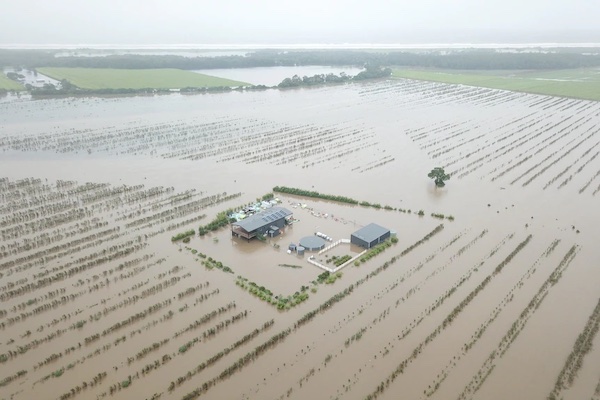Australia’s wheat farmers were expecting to harvest a near-record crop as recently as September but the return of unrelenting rains in some growing regions is now complicating the outlook. Parts of the country in early October were inundated with three to four times their average monthly rainfall in less than a week. Bumper production in several key areas will likely keep overall production above average but the crop is still threatened by quality issues, labor constraints, and severe transportation snags.
Australia’s government forecaster ABARES last estimated the crop at 32.2 million metric tons (MMT) on September 9, when weather was still favorable for boosting yields. The US Department of Agriculture in October pegged the crop at 33 MMT, while Rabobank most recently estimated the crop at 35.52 MMT. All of those estimates are above Australia’s 5-year average of just under 25 MMT, though there is still room for current forecasts to edge lower.
Australia’s winter crop harvest can begin in late October and continue through until January in the higher rainfall areas. Western Australia and New South Wales (NSW) are the largest wheat production states. While Western Australia is on track to produce a record crop, NSW along with the state of Queensland, both on the east coast, were hit hard by too much rain during planting in March and April.
NSW in particular is in rough shape with Rabobank analyst Dennis Voznesenski forecasting total grain and oilseed production in the state will fall by at least -28% versus last year. “Excessive rain leading into harvest followed significant issues at planting, where some farmers replanted up to three times or had to abandon hectares altogether,” he said. Voznesenski expects only between 75-92% of the state’s grain will be harvested.
The latest round of torrential rains have inundated the southeastern states, with the state of Victoria the hardest hit. Rabobank said crops in Victoria had been looking incredibly good until the first weekend in October when rain returned. Total crop losses in Victoria won’t be known until the water recedes. Overall, Voznesenski expects considerably less harvested acres than were planted across NSW, parts of northern Victoria, and southern Queensland “due to excessive rains either at planting, during the growing season, or leading right into harvest.”
Keep in mind, water is still rising in some major waterways in the southeast and may not peak until late October. There is also more rain in the forecast for already flooded regions in the southeast, including NSW, Victoria, Queensland, and South Australia. Wet weather is also expected to pressure the protein content of the wheat.
Voznesenski also warned that the challenges of a wet harvest would be compounded by labor shortages, with big numbers of farmers in Queensland, and NSW changing harvest strategies to cope with a lack of workers. A recent report estimated the country is short at least -172,000 workers across food production and distribution chains. Shortages of rental housing in regional areas has compounded the problem.
Additionally, Voznesenski said Australia’s ability to supply world markets would be limited by supply chain bottlenecks. Downpours this year have let long stretches of road and rail networks damaged, and some still impassable. He says the exportable surplus from this harvest is expected to well exceed the nation’s official estimated export capacity. (Sources: Rabobank, S&PGlobal, Reuters)











